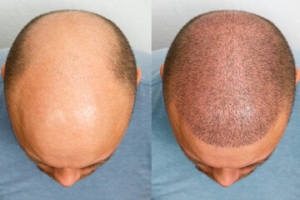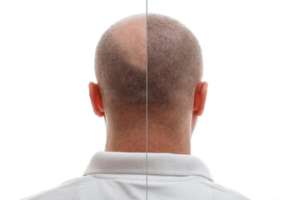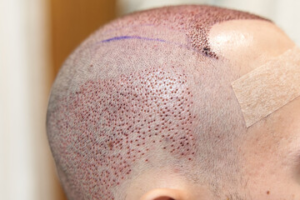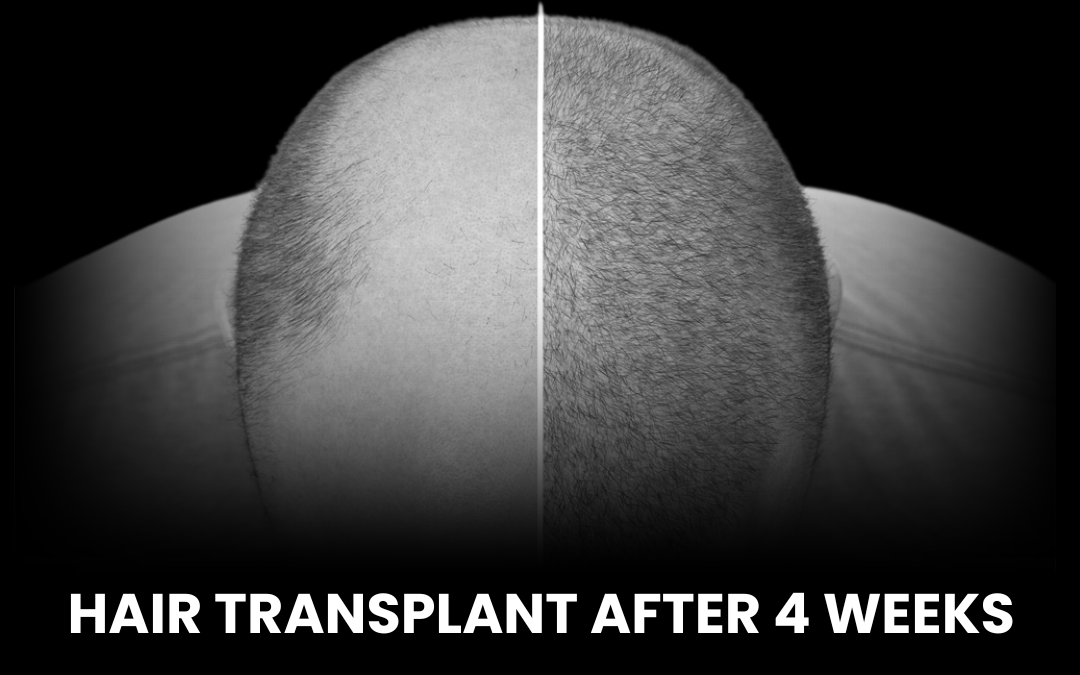Undergoing a hair transplant is a significant decision, and the journey doesn’t end once the procedure is completed. A hair transplant after 4 weeks is an important milestone. Many patients are curious about what they should be experiencing and how their recovery is progressing. This blog aims to provide you with a comprehensive overview of what to expect at this stage in your hair transplant journey.
 If you are considering a hair transplant or are currently navigating the post-operative period, it is crucial to have guidance from experts. The QHT Hair Transplant Clinic in India, renowned for its expertise in hair transplant procedures such as the Quick Hair Transplant (QHT), offers invaluable insights and care tips to ensure your recovery is smooth and effective. Their specialized approach and extensive experience make them a trusted choice for individuals seeking high-quality hair restoration solutions.
If you are considering a hair transplant or are currently navigating the post-operative period, it is crucial to have guidance from experts. The QHT Hair Transplant Clinic in India, renowned for its expertise in hair transplant procedures such as the Quick Hair Transplant (QHT), offers invaluable insights and care tips to ensure your recovery is smooth and effective. Their specialized approach and extensive experience make them a trusted choice for individuals seeking high-quality hair restoration solutions.
Consult with an expert hair transplant surgeon for personalized guidance on your hair transplant journey. Book your appointment today!
But what exactly should you expect after four weeks?
What To Expect From Hair Transplant After 4 weeks?
 Four weeks after a hair transplant, you’re entering an important phase where several changes occur. The transplanted hair often undergoes what is known as “shock loss,” a normal part of the recovery where the hair shafts shed while the follicles remain healthy, preparing to support new growth.
Four weeks after a hair transplant, you’re entering an important phase where several changes occur. The transplanted hair often undergoes what is known as “shock loss,” a normal part of the recovery where the hair shafts shed while the follicles remain healthy, preparing to support new growth.
By this time, any redness, swelling, or scabbing at the transplant site should have significantly subsided, and the crusts around the transplanted hairs likely fallen off with the shedding.
While it might still be too early to notice significant new hair growth, some patients may begin to see the first signs of tiny hairs sprouting through the scalp, signaling the start of the new growth phase.
Seek guidance from a leading professional for personalized insights into your hair transplant journey. Book your appointment today!
Now, let’s delve deeper into what constitutes progress in a hair transplant journey after four weeks.
Hair Transplant Progress
At four weeks post-hair transplant, the progress becomes more visible.
First Few Days: Immediately after the transplant, the scalp may exhibit significant swelling and sensitivity as a natural response to the surgical procedure.
Week 1-2: During this period, the initial shedding of the transplanted hair begins. This is often referred to as “shock loss” and is a normal part of the healing process where the hair shafts shed while the follicles remain intact.
Week 3-4: As you approach the one-month mark, shedding continues but becomes less intense. The redness and swelling that initially appeared post-surgery should significantly decrease. Importantly, this phase often marks the exciting onset of new hair growth, as the healthy follicles start to produce new hairs.
Connect with an expert professional to learn more about your hair transplant progress and personalized care plan.
However, it’s crucial to be aware of potential complications that may arise even after four weeks. Read on to understand!
Hair Transplant Complications After 4 weeks
 Rare complications such as infection or excessive bleeding may occur after four weeks post-hair transplant. It’s essential to monitor any unusual symptoms and promptly consult with a hair transplant expert.
Rare complications such as infection or excessive bleeding may occur after four weeks post-hair transplant. It’s essential to monitor any unusual symptoms and promptly consult with a hair transplant expert.
- Infection: Monitor for signs such as increased redness, warmth, or drainage from the transplant site. Prompt medical attention is crucial to prevent complications.
- Excessive Bleeding: While rare, persistent bleeding should be addressed immediately to prevent further complications.
- Prolonged Swelling: Some degree of swelling is normal post-surgery. But, if it persists or worsens after four weeks, consult with your healthcare provider.
- Persistent Numbness: Gradual improvement in sensation is expected. But, if numbness after hair transplant persists or spreads, inform your surgeon for evaluation.
For guidance on managing hair transplant complications, consult with an expert hair transplant surgeon for personalized care.
Now, let’s explore essential post-care practices to ensure a successful hair transplant outcome.
Post Care After Hair Transplant
Effective care after a hair transplant is crucial in optimizing the results of your hair transplant. Below are some guidelines that promote healing and minimize the risk of complications:
- Gentle Cleansing: Use a mild shampoo to cleanse the scalp. Also, avoid harsh scrubbing to protect the newly transplanted hair follicles.
- Moisturize: Keep the scalp hydrated with recommended moisturizers to prevent dryness and promote healing.
- Sun Protection: Shield the scalp from direct sunlight. It prevents sunburn and minimizes the risk of post-operative complications.
- Avoid Strenuous Activity: Refrain from rigorous physical activities that may strain the scalp or disrupt the healing process.
- Follow-up Appointments: Attend scheduled follow-up appointments to monitor progress and address any concerns promptly.
- Patience: Be patient and allow time for the transplanted hair to grow and achieve optimal results.
For personalized guidance on post-care practices, consult with an expert professional for tailored recommendations.
Now, let’s explore tips to maintain a successful hair transplant outcome beyond the initial recovery period.
Tips To Maintain Successful Hair Transplant Result After 4 weeks
Here are six tips to ensure long-term success:
- Healthy Lifestyle: Adopt a balanced diet and lifestyle habits to support overall hair health and growth.
- Gentle Hair Care: Handle the transplanted hair with care. Try avoiding excessive pulling or styling that may damage the follicles.
- Regular Trims: Trim your hair regularly to maintain a neat appearance and prevent split ends. This promotes healthy growth.
- Stress Management: Minimize stress through relaxation techniques or hobbies to reduce the risk of hair loss.
- Avoid Smoking: Smoking can negatively impact hair growth and overall health. So quitting or reducing smoking is advisable.
- Follow Medical Advice: Adhere to any additional instructions provided by your healthcare provider for optimal results.
For personalized tips on maintaining your hair transplant results, consult with a professional for tailored advice.
Finally, let’s wrap up with a summary of the key insights discussed.
Conclusion
In conclusion, the journey of a hair transplant after four weeks encompasses various milestones. QHT Clinic is committed to excellence in hair restoration. It is a trusted choice for patients seeking a reputed hair transplant clinic in India.
From managing swelling and numbness to providing comprehensive post-care guidance. Their expert team ensures a seamless experience and optimal outcomes for every patient.
FAQ’s
How long until a hair transplant looks normal?
It typically takes about 9 to 12 months for a hair transplant to look normal as the hair grows and matures.
Can I resume wearing hats or helmets after 4 weeks?
Yes, you can usually resume wearing hats or helmets after 4 weeks, but it’s best to follow your doctor’s specific advice.
Is it normal to still have redness or swelling after 4 weeks?
Some mild redness or swelling is normal after 4 weeks, but it’s advisable to consult your doctor if you have concerns

